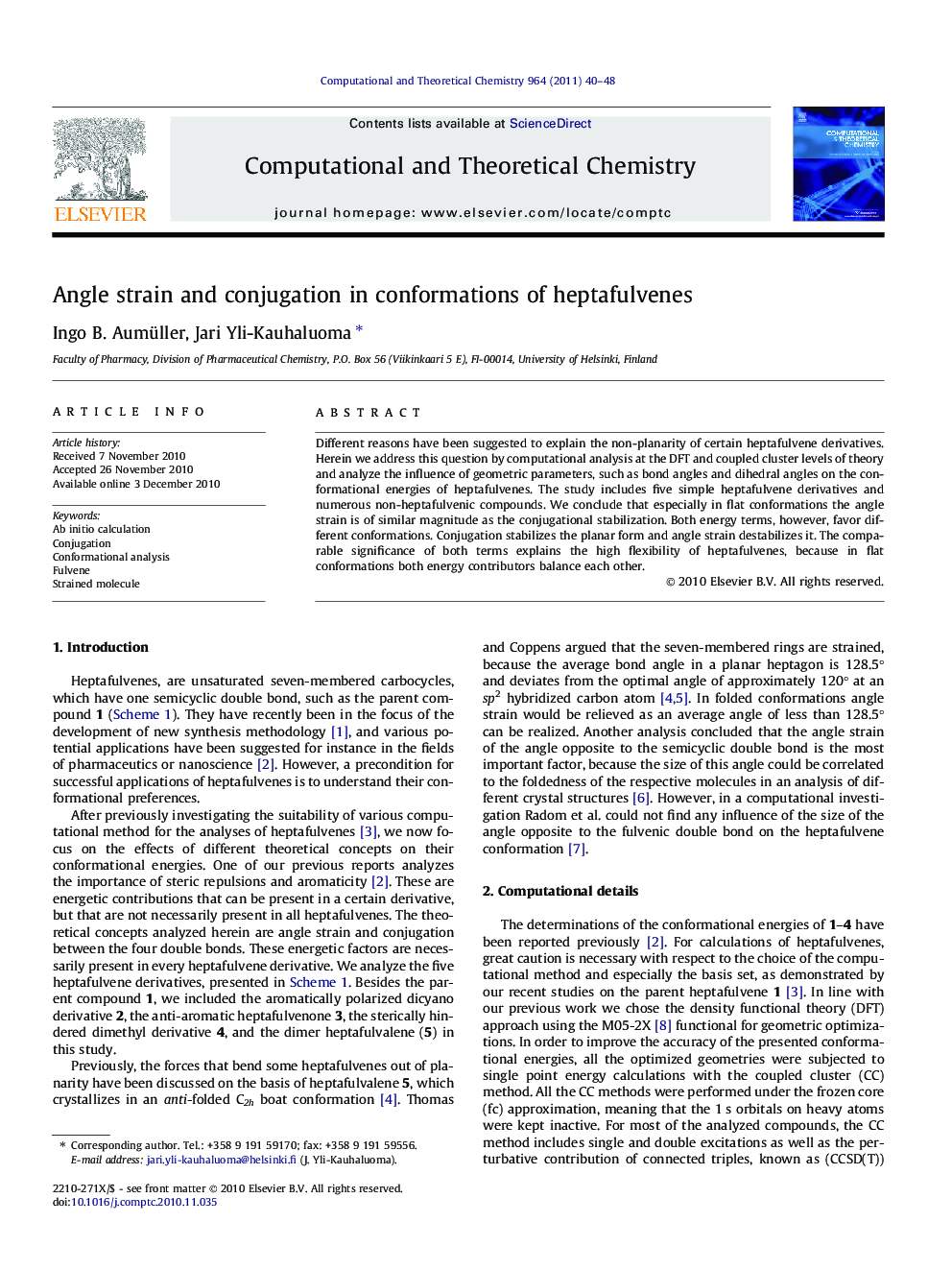| Article ID | Journal | Published Year | Pages | File Type |
|---|---|---|---|---|
| 5395301 | Computational and Theoretical Chemistry | 2011 | 9 Pages |
Abstract
Different reasons have been suggested to explain the non-planarity of certain heptafulvene derivatives. Herein we address this question by computational analysis at the DFT and coupled cluster levels of theory and analyze the influence of geometric parameters, such as bond angles and dihedral angles on the conformational energies of heptafulvenes. The study includes five simple heptafulvene derivatives and numerous non-heptafulvenic compounds. We conclude that especially in flat conformations the angle strain is of similar magnitude as the conjugational stabilization. Both energy terms, however, favor different conformations. Conjugation stabilizes the planar form and angle strain destabilizes it. The comparable significance of both terms explains the high flexibility of heptafulvenes, because in flat conformations both energy contributors balance each other.
Related Topics
Physical Sciences and Engineering
Chemistry
Physical and Theoretical Chemistry
Authors
Ingo B. Aumüller, Jari Yli-Kauhaluoma,
